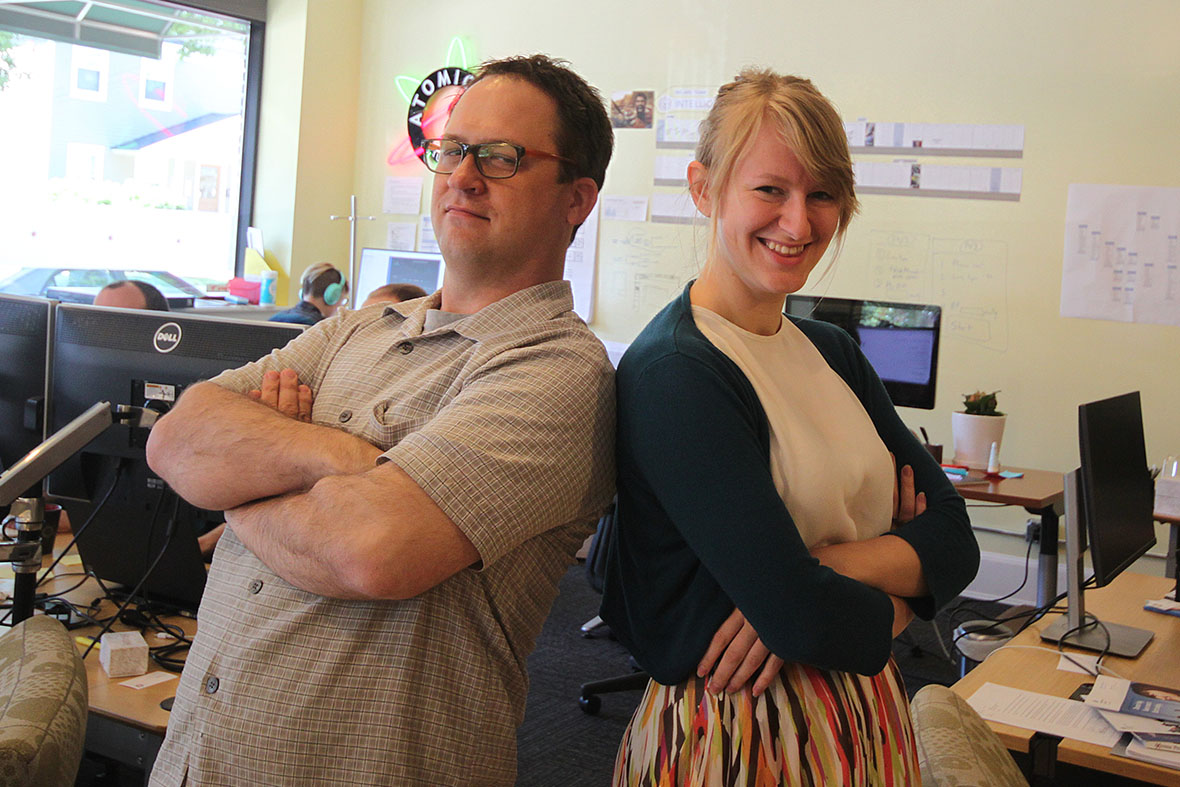Atomic recently started a new vehicle, the Atomic Accelerator Program, for onboarding new employees fresh out of college. We are excited about this effort, since there is a big gap between what we learn in school and taking on an actual career in a software development organization.
I wanted to share some of the things I have learned about creating a healthy environment for growth, as my team has taken on recent graduate Rachael Miller. I hope my experiences as a newcomer and now a mentor will help others improve their onboarding processes and remind me what’s important to keep in mind, as well.
Laying Out the Welcome Mat
My first and primary focus in bringing Rachael onboard was to make her feel welcome.
Learning from my experience
I remember how overwhelming it was for me to start a job at IBM fresh out of college, way back in the day. I thought it was my responsibility to prove myself to my co-workers, and I did not think I could learn things fast enough. I felt very incompetent and didn’t know how to get myself into a better position.
Looking back, I realize I focused too much on how I was being perceived and not enough on actually forming relationships and getting comfortable in my work environment. Eventually, I formed some relationships with co-workers and developed them to a level where I could ask for help without feeling scrutinized. At this point, I realized that even the more senior folks were always learning new things and trying to conquer new problems. They had just as many challenges as I did!
Making it easier for someone else
My own newcomer strategy of hiding my insecurities and not asking questions as I ran into problems was counter-productive. As a mentor for Rachael, I did not want her to feel intimidated by me or to think that she had to hold back on asking questions or asking for assistance. I was determined to shatter the ice from the get-go!
Leveling the Playing Field
I have been putting a lot of effort into making Rachael feel like part of the team. That doesn’t mean just getting her involved in real work; it also means including her in the regular—and necessary—banter around that work. Rachael took to this approach very well, and our interactions led to an enjoyable start and a healthy basis for moving ahead.
Breaking down the walls
In order to create an effective learning environment, I wanted to make Rachael feel comfortable asking any questions she may have. When I started out, I know I struggled with getting comfortable enough to ask questions of my co-workers without feeling like I was being scrutinized and judged for what I didn’t know. I wanted to eliminate that whole ineffective game for Rachael, so I focused first on being a friend, and less on being a colleague.
Enjoying lunch together has given us a great break from the grind, allowing us to interact more as friends and equals, rather than student and mentor. We talked about where we came from and about our education. We shared our hobbies, interests, and quirks.
The team also vented to her when things weren’t going as planned, or something just didn’t make sense. This helped her feel like she could do the same, and she soon seemed comfortable sharing her frustrations, as well. I found this practice crucial in helping us not get too deep into a problem, because being hyper-focused on a roadblock makes it difficult to solve the issue creatively.
Setting expectations
I tried to make it clear that I did not expect Rachael to know most of the stuff I take for granted as a seasoned developer. Heck, we are all always learning—continuously! I wanted to facilitate discussions not so much about what she should be doing, but why we should be doing something, and when we should stop digging. These deeper questions provide a more solid basis for establishing skills and facilitate better planning when taking on new problems.

Keepin’ On Keepin’ On
We have a long journey ahead of us, and the two of us are ready to take on the many adventures and challenges that lie ahead. Rachael is making very good progress, and she is already much better equipped to take them on.
I am really enjoying this experience, too. I have learned, and relearned, how to be a better developer and co-worker, and I plan to continue to growing my relationship with Rachael and help her form more relationships with other Atoms.
We have a strong culture of leaning on one another at Atomic. I want to help Rachael realize that expressing opinions and being willing to help others are both valuable, and I want to support in her in becoming a great co-worker and mentor to others in both the short- and long-term.
Through all of this, I am grateful to have landed a new friend, and I hope we both continue having fun working—and laughing—together.

